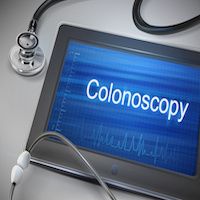Colonoscopy Prevents Crohn's Disease Post-Operative Endoscopic Recurrence
While it's already clinically understood that most patients with Crohn's disease suffer a recurrence following an intestinal resection, researchers have not evaluated the best strategy to prevent the disease from recurring.

While it’s already clinically understood that most patients with Crohn’s disease suffer a recurrence following an intestinal resection, researchers have not evaluated the best strategy to prevent the disease from recurring. That’s why a team from St Vincent's Hospital, in Melbourne, Australia, sought to determine whether endoscopic monitoring and treatment step-up for early recurrence provided any benefit compared to using the best drug therapy alone, starting immediately after surgery — and they discovered that it did.
“Treating according to risk of recurrence with six-month colonoscopy and step-up treatment is significantly superior to optimal drug therapy in decreasing the recurrence of Crohn’s disease,” said Peter De Cruz, MBBS, MD, FRCP, FRACP, a gastroenterologist of St. Vincent’s Hospital, at Digestive Disease Week 2013, held May 18-21, 2013, in Orlando, Fla.
Even in the era of biologic treatment, roughly one-third of Crohn’s patients require surgery, De Cruz added. Eight in 10 Crohn’s patients will develop a subclinical recurrence, while three in 10 will see a clinical recurrence and one in 10 will need a second surgery within a year. While risk factors for failure include a prior resection, perforating disease, and smoking, drug therapy can be effective in prevention.
In their Post-Operative Crohn’s Endoscopic Recurrence (POCER) randomized, controlled trial, the research team stratified participants as either high risk due to the previously stated risk factors or low risk. All patients received 400-milligram metronidazole twice daily for three months. The high-risk group also received thiopurine, or adalimumab every two weeks if they could not tolerate those drugs.
The team randomized 174 patients to colonoscopy at six months or standard best-drug care, with an 80 percent to 20 percent split between high risk and low risk. Of the 52 patients in the standard cohort, 44 were high risk and eight were low risk, and of the 122 patients in the colonoscopy group, 101 were high risk and 21 were low risk.
At six months post-operation, patients in the colonoscopy cohort received that procedure, and if endoscopic evidence of recurrence was found, then the low-risk patients were placed on thiopurine or adalimumab every two weeks if they could not tolerate thiopurine. High-risk patients on thiopurine with recurrence were given fortnightly adalimumab instead, and high-risk patients who were already taking adalimumab were stepped up to weekly dosing. Thirty-seven percent of patients received step-up treatment for remission.
All patients received a colonoscopy at 18 months to assess endoscopic recurrence. While physicians performing the colonoscopies were aware of the treatment, the findings were assessed by the research team.
Endoscopic recurrence was discovered in 49 percent of the active cohort and 67 percent of the standard care group. Active smoking was associated with recurrence, and the intervention was associated with decreased risk of recurrence at 18 months. Complete mucosal normality was also observed in 22 percent of the colonoscopy group and 8 percent of the standard cohort. No patients experienced a severe adverse event.
“Stepping up treatment brought 39 percent of patients into remission one year later,” De Cruz said, later concluding that “adalimumab was significantly more effective than thiopurine in preventing recurrence in the short term. Selective potent immune suppression — adjusted if needed on the basis of colonoscopy, rather than its use in all high-risk patients — leads to effective disease control in a majority of patients.”